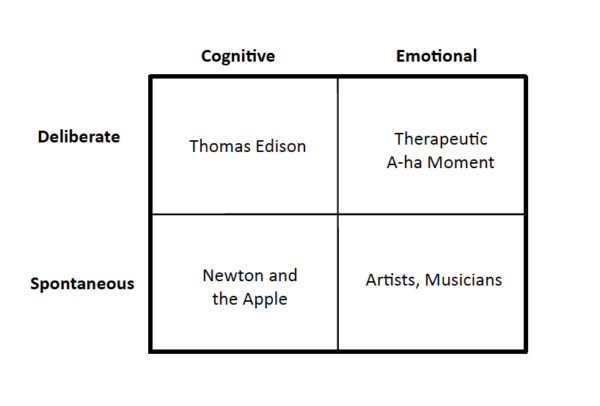Teacher Diaries: Ms. Rachel – Creativity
TweetPeople have often limited their definition of creativity to art. There are indeed many different ways to define creativity, as it can come in the form of original thought, divergent thinking, problem solving, inspiration and imagination. Perhaps it is easier to think of creativity as a matrix like this:
Creativity can be either emotionally or cognitively based, and it can also be spontaneous or deliberate.
For quadrant 1, this kind of creativity comes from sustained effort and work. For example, Thomas Edison, the inventor of the electric light bulb, was a deliberate and cognitive creator. He ran experiment after experiment before he came up with an invention.
For quadrant 2, the creativity is more related to emotions from personal breakthroughs. If you have ever had a personal crisis (e.g. relationship break-up, went through a bankruptcy), and then came up with a chain of bad decisions you might have made that contributed to the crisis, then you may have experienced deliberate, emotional creativity.
For quadrant 3, this type of creativity usually comes with a flash of insight. It happens when you are struggling with a problem, and you just don’t have any possible solution until you take a break and get a flash of insight to solve it. This is an example of spontaneous and cognitive creativity.
For quadrant 4, this is the kind of creativity that great artists and musicians have. No specific knowledge is needed as it’s not cognitively demanding, but skills in writing, art or music are needed to create something from the spontaneous and emotional creative idea.
As you can see, different types of creativity require different qualities. Even if you are not talented in specific skills, you can be creative TOO if you are willing to put in effort and time to build up your knowledge!

